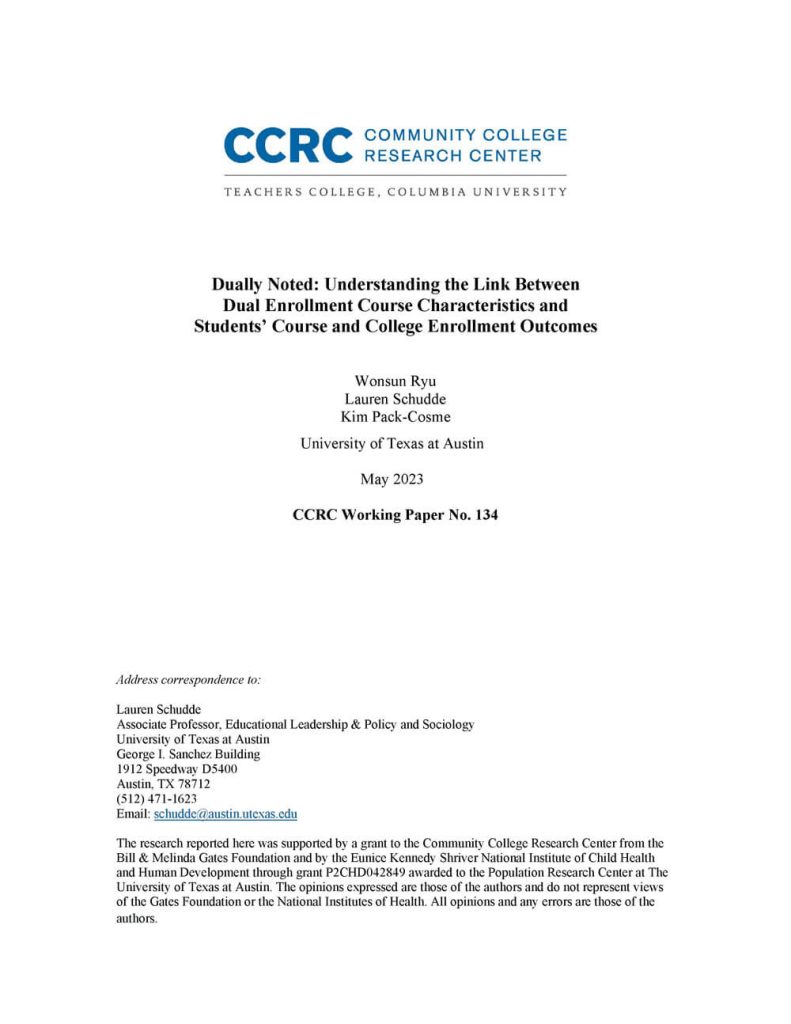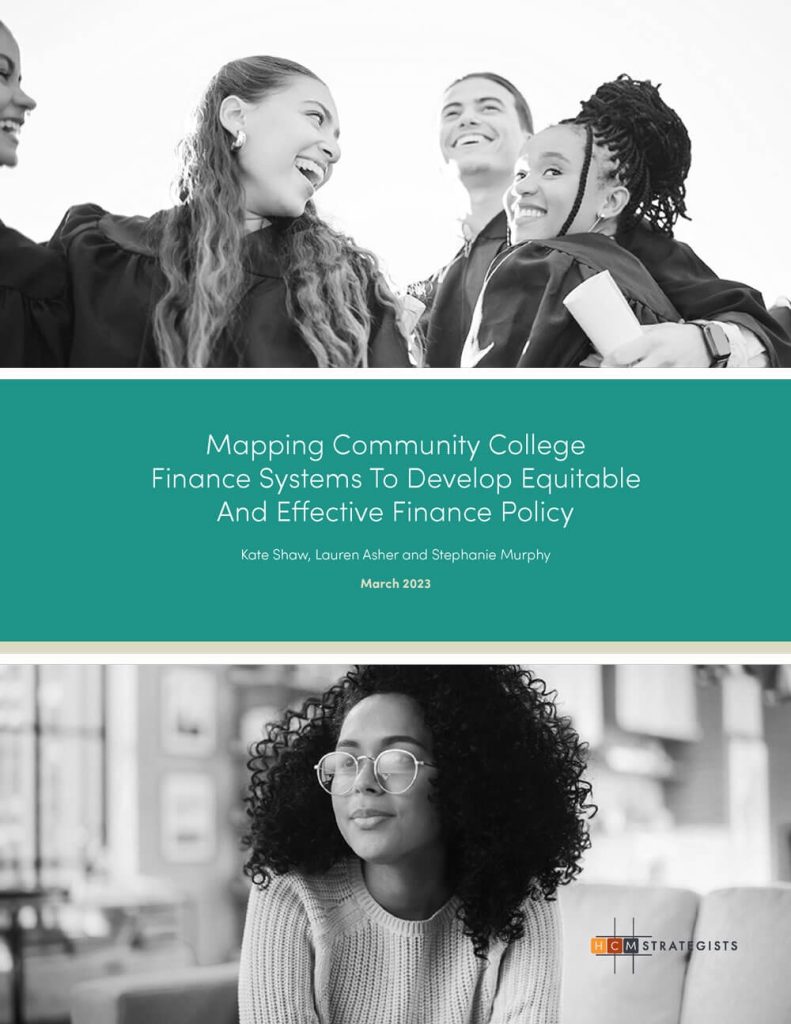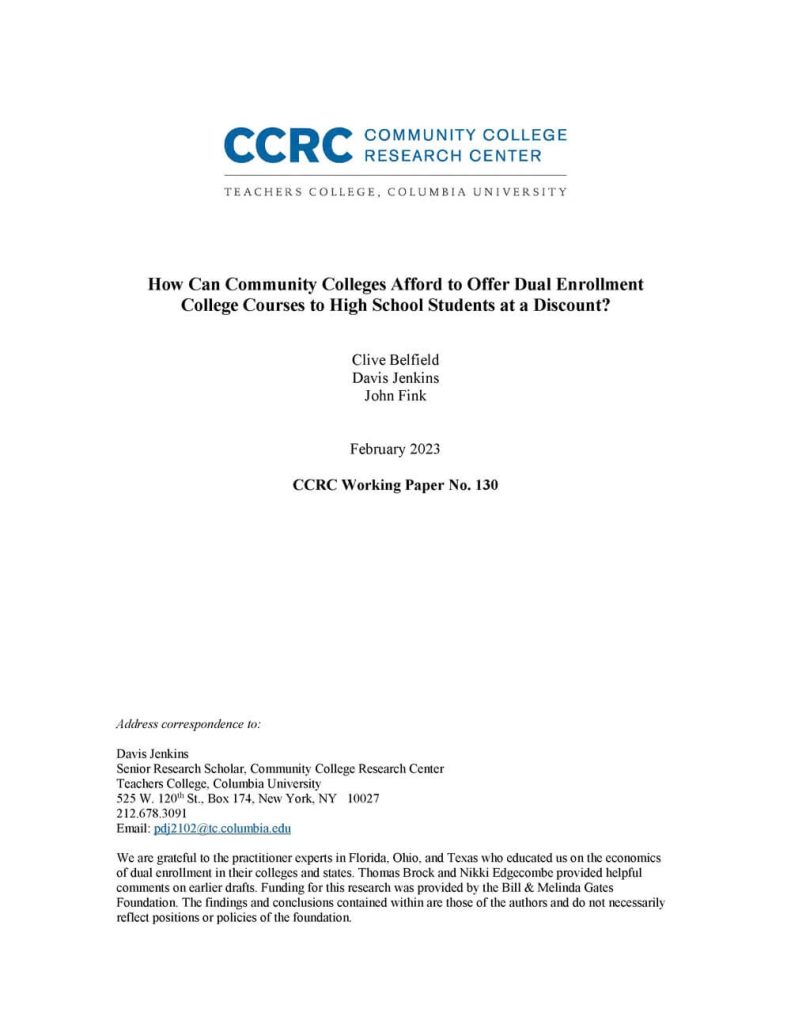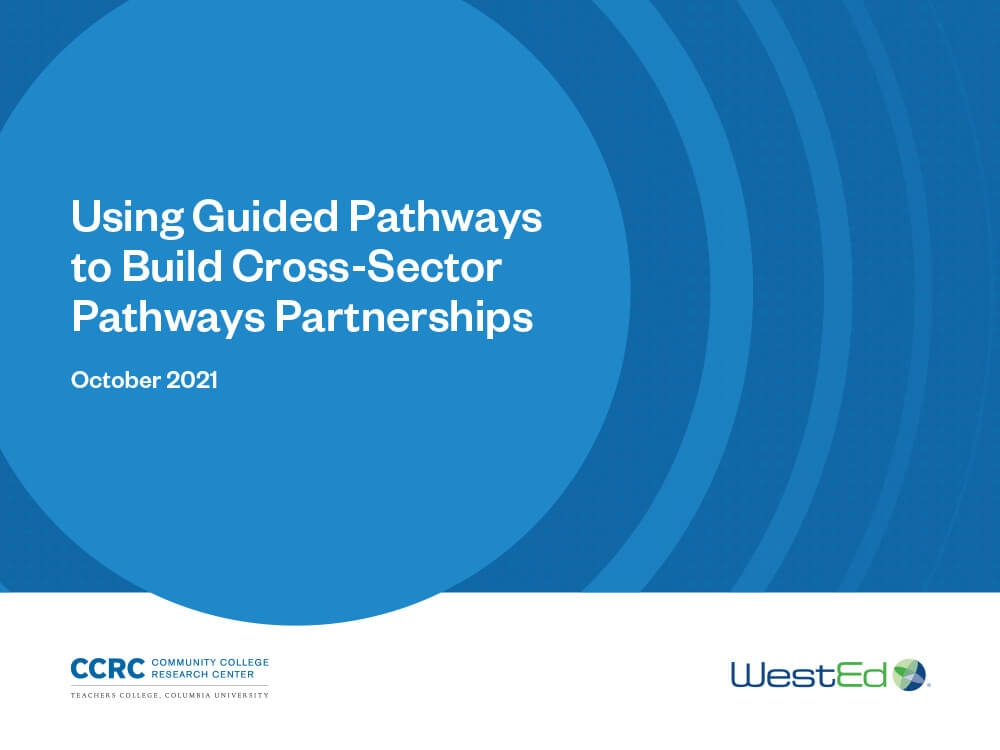Dually Noted: Understanding the Link Between Dual Enrollment Course Characteristics and Students’ Course and College Enrollment Outcomes

Using data from Texas, this paper describes dual enrollment course characteristics such as instructor affiliation, location, and modality and examines how these characteristics predict students’ course completion, course grades, and subsequent college enrollment.
Mapping Community College Finance Systems to Develop Equitable and Effective Finance Policy

This report describes the diversity and complexity of community college state finance systems, and how to identify the often competing incentives within them, by comparing the systems of three very different states: California, Ohio, and Texas.
How Can Community Colleges Afford to Offer Dual Enrollment College Courses to High School Students at a Discount?

Using three case studies, this paper examines the conditions under which dual enrollment programming could be made sustainable through efficiency gains, even for colleges that charge discounted tuition (or none at all)
Preparing for Tomorrow’s Middle-Skill Jobs: How Community Colleges Are Responding to Technology Innovation in the Workplace

Based on fieldwork at eight institutions, this report describes how community colleges are responding to workplace technology innovation by adapting their workforce programming, diversifying pathways to certificates and degrees, and addressing equity concerns.
Using Guided Pathways to Build Cross-Sector Pathways Partnerships

Based on fieldwork at four guided pathways colleges, this report introduces a cross-sector pathways model and highlights emerging practices and strategies that community colleges are using to build stronger connections with employers, universities, and K-12 schools.
